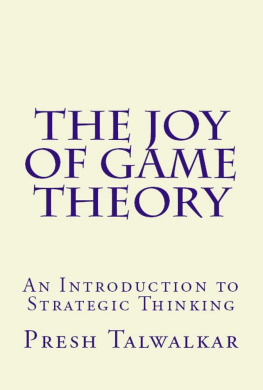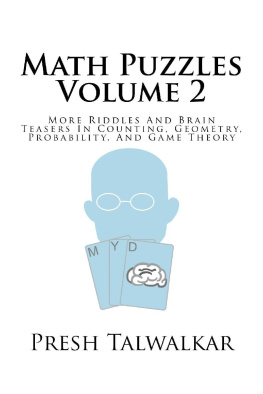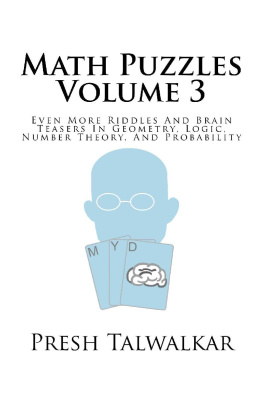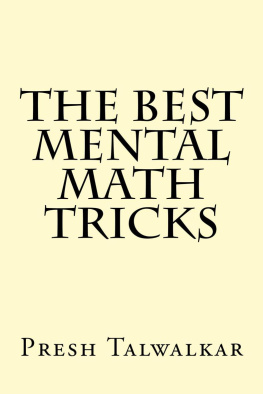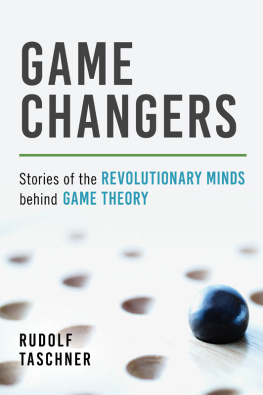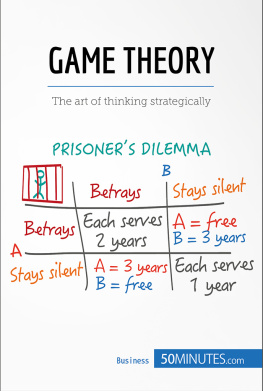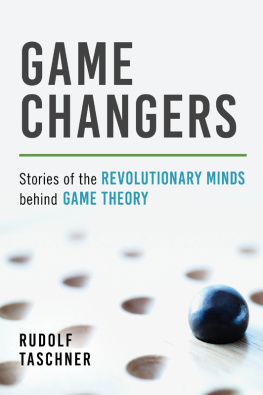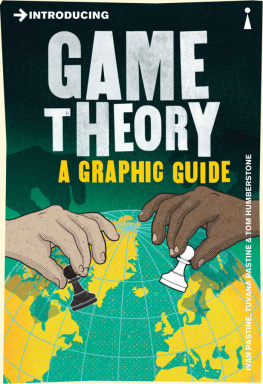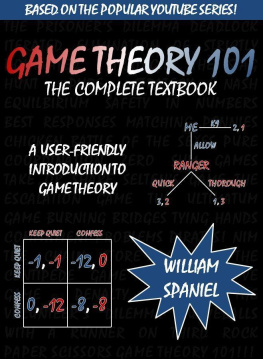About The Author
Presh Talwalkar studied Economics and Mathematics at Stanford University. His site Mind Your Decisions has blog posts and original videos about math that have been viewed millions of times.
More Books By Presh Talwalkar
Math Puzzles Volume 1: Classic Riddles And Brain Teasers In Counting, Geometry, Probability, And Game Theory . This book contains 70 interesting brain-teasers.
Math Puzzles Volume 2: More Riddles And Brain Teasers In Counting, Geometry, Probability, And Game Theory . This is a follow-up puzzle book with more delightful problems.
Math Puzzles Volume 3: Even More Riddles And Brain Teasers In Geometry, Logic, Number Theory, And Probability . This is the third in the series with 70 more problems.
But I only got the soup! This fun book discusses the mathematics of splitting the bill fairly.
40 Paradoxes in Logic, Probability, and Game Theory . Is it ever logically correct to ask May I disturb you? How can a football team be ranked 6th or worse in several polls, but end up as 5th overall when the polls are averaged? These are a few of the thought-provoking paradoxes covered in the book.
Multiply By Lines . It is possible to multiply large numbers simply by drawing lines and counting intersections. Some people call it how the Japanese multiply or Chinese stick multiplication. This book is a reference guide for how to do the method and why it works.
The Best Mental Math Tricks . Can you multiply 97 by 96 in your head? Or can you figure out the day of the week when you are given a date? This book is a collection of methods that will help you solve math problems in your head and make you look like a genius.
Table of Contents
Why Learn Game Theory?
Game theory is a beautiful subject and this book will teach you how to understand the theory and practically implement solutions. This book has two primary objectives.
(1) To help you recognize strategic situations.
(2) To show you how to make better decisions and change the game , a powerful concept that can transform no-win situations into mutually beneficial outcomes.
As these goals indicate, game theory is about more than board games and gambling. Specifically, game theory is a branch of economics that considers how players of a mathematically formalized game can optimize their decisions. In these games, what each person does has an effect on other people in the group. Game theory studies how to make the best choice in situations of interdependent decision-making.
Game theory offers practical insights that have been applied to various fields, including political science, business, evolutionary biology, computer science, and philosophy. The Nobel Prize in Economics was awarded for work in game theory in the years 1994 (John C. Harsanyi, John F. Nash Jr. and Reinhard Selten), 2005 (Robert J. Aumann and Thomas C. Schelling), 2007 (Leonid Hurwicz, Eric S. Maskin and Roger B. Myerson), and 2012 (Alvin E. Roth and Lloyd S. Shapley).
Before proceeding, it is worth providing a functional definition. In this book, a game will mean a situation characterized by three components: (1) a set of people involved called players , (2), a set of allowable moves that each player can make, known as strategies , and (3) a description of how each player feels about the possible outcomes mathematically described by a payoff or utility function .
It all seems so simple, and yet that definition belies the complexity of game theory. While it may only take a few seconds to define what a game is, it takes a lifetime to appreciate and master game theory. This book will get you started.
Section I: Introducing Strategic Games
This section opens with several examples of game theory and defines basic concepts, such as a dominant strategy and a Nash equilibrium. The goal is to get familiar with how games are described and solved, and how game theory is relevant for everyday situations.
Unlike a textbook approach where one learns definitions and theories first, this book is based on understanding strategy with real-life situations and stories. We will jump right in with a puzzle about why gas stations tend to cluster in location.
Why Are Gas Stations Often Located Next To Each Other?
There are hundreds of gas stations around San Francisco in the California Bay Area. One might think that gas stations would spread out to serve local neighborhoods. But this idea is contradicted by a common observation. Whenever you visit a gas station, there is almost always another in the vicinity, often just across the street. In general, gas stations are highly clustered.
The phenomenon is partly due to population clustering. Gas stations will be more common where demand is high, like in a city, rather than in sparsely populated areas like cornfields. But why do stations locate right across the street from each other? Why don't they spread out?
There are many factors at play. Locating a gas station is an optimization problem involving demand, real estate prices, estimates of population growth, and supply considerations such as the ease of refueling. As the problem is complex, any simplified explanation will have its shortcomings.
Nevertheless, there is a simple game about location competition that provides valuable insight. While the game involves only a few rules, it illustrates how businesses might compete on location and end up clustering together. The game also has an application to political science in the strategy for campaigning in elections. The following game is based on a model described in the 1929 paper Stability in Competition by the mathematician Harold Hotelling.
Hotelling's Game
There are two players in this game. In this exposition, imagine each player is a hot dog stand on a beach that competes for customers. The beach is a straight shoreline, in which customers are uniformly spread out. The beach is represented by a number line ranging from -1 at one endpoint to 1 at the other.
The hot dog stands compete purely on location and sell identical products. Each stand picks a location, which is represented by a number between -1 and 1.
Conditional on where the stands locate, customers will simply choose the stand closer to them. If the stands are in the same spot, customers will split up and both stands end up with an equal number of customers. For instance, if a customer is at point 0.5, and the stands are located at -1 and 1, the customer will be closer and choose the stand located at point 1.
The following figure is a graphical representation of the game, with the labels S and S for the locations of hot dog stands 1 and 2, respectively. Note the endpoints of the shore and the placeholders for each stand's location.

If the two hot dog stands compete for the most customers, where will each hot dog stand end up? (For reference, the solution to the game is referred to as a Nash equilibrium , which will be explained in subsequent chapters).
Finding The Solution (Intuitive)
One way to approach the game is to ignore the competition. Assume you are the only hot dog stand on the beach. Where might you want to locate?
The answer is easy: any place you want. You are a monopolist so customers will have to walk to you regardless. If you choose to locate all the way at one endpoint -1, customers even from the other side of the beach at endpoint 1 will have to walk all the way. For you, it is nice to be a monopoly.
But you are a paranoid monopoly, and common sense would push you closer to the center, labeled point 0. The problem is that if you locate all the way on the far left, or all the way on the far right, a competitor might choose a more central location and cut you off. If you favor the left side, for instance, an entrant could locate slightly to your right, closer to the center, and capture the majority of the market.
Next page
